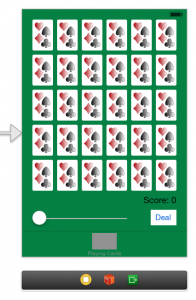Please note, this blog entry is from a previous course. You might want to check out the current one.
The Set game only needs to allow users to pick sets and get points for doing so (e.g. it does not redeal new cards when sets are found). In other words, it works just like the Playing Card matching game. The only differences are that it is a 3-card matching game and uses different cards (deal your Set cards out of a complete Set deck).
Let’s start with the card model, instead of a suit and a rank, we have colors, symbols, shadings and the count of symbols, for which we create public properties, setters and getters, and therefore need also to synthesize them:
Continue reading “cs193p – Assignment #3 Task #2”
